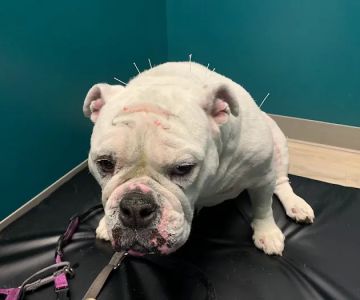How to Stop a Dog from Chasing Its Tail: Understanding the Behavior and Solutions
As a dog owner, you may have observed your furry friend spending long minutes chasing its tail in circles, but have you ever wondered why your dog does this? While it's often entertaining, tail chasing can be a sign of underlying issues, such as anxiety, boredom, or even a medical condition. If you're curious about how to stop a dog from chasing its tail, this guide will walk you through the reasons behind the behavior and offer effective strategies to prevent it.
1. Why Do Dogs Chase Their Tails?
Before we dive into how to stop this behavior, let's explore why dogs chase their tails in the first place. Dogs are naturally curious creatures, and tail chasing can be a result of simple playfulness, especially in puppies. However, in some cases, it can indicate stress or anxiety. If your dog is frequently chasing its tail, it might be due to:
- Instinctual Play: Puppies are especially prone to chasing their tails as a way of entertaining themselves. It’s often harmless and a natural part of growing up.
- Boredom: Dogs need mental and physical stimulation. Without it, they may resort to tail chasing to pass the time.
- Anxiety or Stress: Dogs that are feeling anxious or stressed may chase their tails as a coping mechanism. This is often accompanied by other signs of distress like barking, whining, or destructive behavior.
- Medical Issues: Tail chasing can also be linked to health issues, such as flea infestations, allergies, or injuries. If the behavior is persistent, a visit to the vet is advised to rule out any medical causes.
2. Understanding the Root Causes of Tail Chasing
As you can see, tail chasing isn't always just a quirky behavior. It’s important to assess your dog’s overall well-being to understand why it’s happening. Take note of the following factors:
- Age: Younger dogs, especially puppies, are more likely to chase their tails. They’re learning about their bodies and exploring their environment.
- Health: A dog that starts tail chasing suddenly or excessively may be trying to alleviate discomfort. If the behavior persists, consider taking your dog to the vet for a checkup.
- Exercise: Lack of exercise can lead to excess energy and frustration, causing your dog to chase its tail as a form of release.
- Environmental Factors: Stressful changes in your dog’s environment, such as moving to a new home or the arrival of a new pet, can trigger tail chasing as an outlet for anxiety.
3. Effective Ways to Stop Your Dog from Chasing Its Tail
Now that we’ve established the reasons behind tail chasing, let’s explore practical ways to stop your dog from engaging in this behavior:
3.1. Increase Physical and Mental Stimulation
The best way to prevent tail chasing caused by boredom or excess energy is to keep your dog engaged. A well-exercised dog is less likely to resort to repetitive behaviors. Try:
- Taking your dog on daily walks to explore new environments and get plenty of exercise.
- Playing interactive games like fetch, tug-of-war, or puzzle toys that challenge your dog’s brain.
- Providing chew toys that keep your dog occupied when you're not around.
3.2. Address Anxiety or Stress
If your dog’s tail chasing is linked to anxiety or stress, it’s crucial to address the emotional needs of your dog. Here are a few ways to help alleviate anxiety:
- Establish a consistent routine for feeding, walks, and playtime to give your dog a sense of security.
- Provide a safe, quiet space where your dog can retreat when feeling overwhelmed.
- Consider using calming aids, such as pheromone diffusers or anxiety wraps, to help calm your dog during stressful situations.
3.3. Reward Positive Behavior
Positive reinforcement is a powerful tool in dog training. When your dog refrains from chasing its tail, reward it with praise, treats, or extra playtime. Over time, your dog will associate not chasing its tail with positive outcomes. Be patient and consistent with your training.
3.4. Consult a Veterinarian
If the tail chasing persists despite your efforts or seems to be related to a health problem, it’s time to consult your vet. A veterinarian can perform an examination to rule out any medical conditions that might be causing your dog discomfort. Conditions like flea infestations, hot spots, or skin allergies can cause your dog to chase its tail to alleviate itching or pain.
4. The Importance of Patience and Consistency
Training your dog to stop chasing its tail requires patience and consistency. Just like any other behavior modification, it won’t happen overnight. It’s essential to stay committed to the process, reward positive behavior, and adjust your approach based on what works best for your dog.
From my own experience with training dogs, I’ve found that addressing the root cause—whether it's boredom, anxiety, or medical issues—makes a significant difference in curbing tail chasing. By incorporating exercise, mental stimulation, and proper care, your dog can learn healthier ways to cope and express itself.
If you’re ever unsure about your dog’s behavior or need more guidance, don’t hesitate to reach out to professionals at Hidden Brook Veterinary for advice and support. A well-trained, happy dog is worth every bit of effort!











